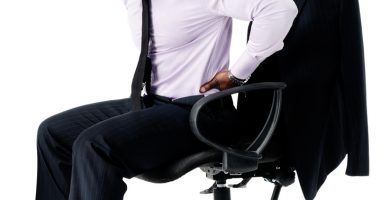Golf: Injuries and prevention
Low back pain, wrist and elbow problems are the most common injuries seen in golfers. Despite being classified as a low-impact sport, approximately 40% of amateur and 60% of professional golfers suffer from injury each season. These injuries majority of the time are due to overuse (such as repetitive bending and twisting), poor conditioning and incorrect swing mechanics (Brandon, 2009., McCarroll, 1996).
The golf swing is often a strong and explosive movement and subjects the lower back (lumbar spine) to quick and intense loads. This can predispose golfers to muscle strains, disc degeneration, osteoarthritis and facet dysfunction in the lower back (Hosea and Gatt, 1996). It is thought that the type of golf swing used contributes to the likelihood of injury. The ‘classic golf swing’ reduces the torque between the pelvis and the shoulders. The front heel is lifted to allow the hip movement, which decreases the torsion/torque through the lumbar spine. The ‘modern swing’ emphasises a large shoulder movement with limited hip turn, as the front foot is kept flat throughout the swing. This swing is thought to allow for more consistent ball striking and an increase in club head speed, however subjects the spine to greater rotational forces and hyperextension on the follow through. If the individual is not properly conditioned and using the ‘modern swing’ they may be at an increased risk of muscular and overuse injuries (Gluck et al, 2008).
A study carried out in 2010 was one of the first to show distinct differences in the swing mechanics between golfers with and without low back pain. It was found that golfers without low back pain had twice as much flexion velocity on the downswing, which meant their abdominal muscles were being activated more, giving them more strength on their swing (Lindsay and Horton, 2002)
It is important that golfers warm up properly, develop a good swing technique and make sure they have good lower back and abdominal strength. Muscle conditioning and flexibility exercises for the trunk muscles (especially the multifidi and tranversus abdominus) are vital. Flexibility stretching is especially important for the seniors as it slows the loss of flexibility, which is associated aging and osteoarthritis. (Gluck et al, 2008., Grimshaw, 2002)
Possibly one of the main factors to address is the misconception of the game itself. Many people view golf to be a gentle sport that is not usually associated with injury. As a result people try to learn the game without proper research or coaching and fail to think about warming up, stretching and exercise preparation (Gluck et al, 2008).
References:
Brandon, B. (2009). Training to prevent golf injury. Current Sports Medicine Reports, 8 (3), pp. 142-146.
Gluck, G., Bendo, J. and Spivak, J. (2008).The lumbar spine and low back pain in golf: a literature review of swing biomechanics and injury prevention. The Spine Journal, 10, pp. 778-788
Grimshaw, P. (2002). Lower back and elbow injuries in golf. Sports Medicine, 32 (10), pp. 655-666.
Hosea, T.M. and Gatt, C.J. (1996). Back pain in golf. Clinic in Sports Medicine, 15 (1), pp. 37-53.
Lindsay, D. and Horton, J. (2002). Comparison of spine motion in elite golfers with and without low back pain. Journal of Sports Sciences, 20 (8).
McCarroll, J.R. (1996). The frequencies of golf injuries. Clinic in Sports Medicine, 15 (1), pp. 1-7.



